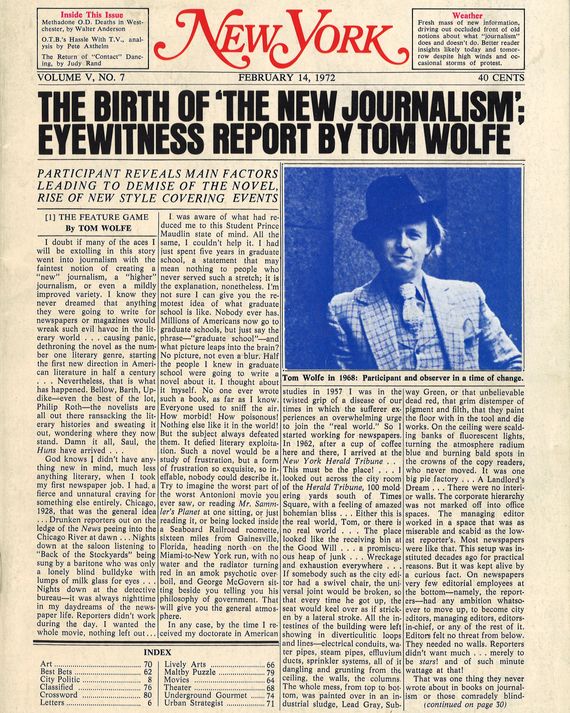Everything about News Articles
Table of ContentsLittle Known Facts About News Articles.8 Easy Facts About News Articles ExplainedNews Articles - Questions3 Easy Facts About News Articles ShownHow News Articles can Save You Time, Stress, and Money.
Excellent expertise of different topics gives pupils an one-upmanship over their peers. Although digital and social media are easily available, we ought to not neglect exactly how essential it is to check out the newspapers. Parents have to attempt and instill the habit of checking out a newspaper as a day-to-day routine to proceed the heritage of the revered print tool.Newspaper article likewise contain at least one of the complying with important attributes relative to the desired target market: closeness, prominence, timeliness, human rate of interest, peculiarity, or consequence. The related term journalese is often made use of, typically pejoratively, to describe news-style writing. An additional is headlinese. Newspapers typically comply with an expository writing design.
Within these limitations, news tales additionally intend to be comprehensive. Nonetheless, other factors are included, some stylistic and some stemmed from the media kind. Among the larger and much more highly regarded newspapers, justness and equilibrium is a major consider offering info. Discourse is typically restricted to a separate section, though each paper may have a various total angle.
Papers with a global audience, for instance, often tend to use an extra formal style of creating. The specific selections made by a news electrical outlet's editor or editorial board are usually gathered in a design guide; usual design overviews consist of the and the US News Design Book. The primary goals of information writing can be summed up by the ABCs of journalism: accuracy, brevity, and clarity.
About News Articles
Generally, reporters will not use a lengthy word when a short one will do. They utilize subject-verb-object building and brilliant, active prose (see Grammar). They offer anecdotes, examples and metaphors, and they rarely depend on generalizations or abstract ideas. Information authors attempt to avoid using the very same word greater than as soon as in a paragraph (sometimes called an "echo" or "word mirror").
However, headings occasionally omit the topic (e.g., "Jumps From Watercraft, Catches in Wheel") or verb (e.g., "Feline lady lucky"). A subhead (likewise subhed, sub-headline, subheading, subtitle, deck or dek) can be either a subordinate title under the main headline, or the heading of a subsection of the write-up. It is a heading that precedes the major message, or a team of paragraphs of the main message.

Extra signboards of any of these types might appear later on in the write-up (particularly on succeeding pages) to lure further reading. Such signboards are also utilized as pointers to the write-up in various other areas of the publication or website, or as ads for the piece in other publication or websites. Typical structure with title, lead paragraph (recap in bold), various other paragraphs (details) and call information.

Instance of a hard-lead paragraph NASA is recommending one more room job. The budget demands around $10 billion for the project.
An "off-lead" is the second most vital front web page news of the day. To "bury the lead" is to start the article with history information or information of secondary significance to the readers, compeling them to read more deeply right into an article than they need to his response have to in order to uncover the necessary factors.
Not known Details About News Articles
Common usage is that one or 2 sentences each develop their own paragraph. Reporters normally explain the company or structure of a news story as an inverted pyramid. The essential and most fascinating aspects of a story are put at the start, with sustaining info adhering to in order of diminishing value.
It permits individuals to explore a subject to just the depth that their interest takes them, and try this site without the imposition of details or subtleties that they could think about unimportant, but still making that details readily available to extra interested visitors. The upside down pyramid framework likewise allows short articles to be cut to any kind of approximate length throughout format, to suit the space readily available.
Some authors start their tales with the "1-2-3 lead", yet there are numerous kinds of lead available. A kicker can refer to numerous points: The last tale in the information program; a "satisfied" tale to finish the program.
Longer posts, such as publication cover posts and the items that lead the within areas of a paper, are understood as. Attribute stories vary from straight information in a number of means.
An Unbiased View of News Articles
The reporter frequently details interactions with interview subjects, making the see this here item extra individual. A feature's initial paragraphs commonly relate a fascinating minute or event, as in an "anecdotal lead". From the details of an individual or episode, its view swiftly broadens to generalizations concerning the tale's subject. The area that signifies what a feature has to do with is called the or billboard.

The Editor's Tool kit: A Reference Guide for Beginners and Professionals (2001) Allan M. Siegal and William G. Connolly. The New York Times Manual of Design and Usage: The Official Style Guide Utilized by the Writers and Editors of the Globe's Many Reliable Paper (2002) M. L. Stein, Susan Paterno, and R.
Comments on “An Unbiased View of News Articles”